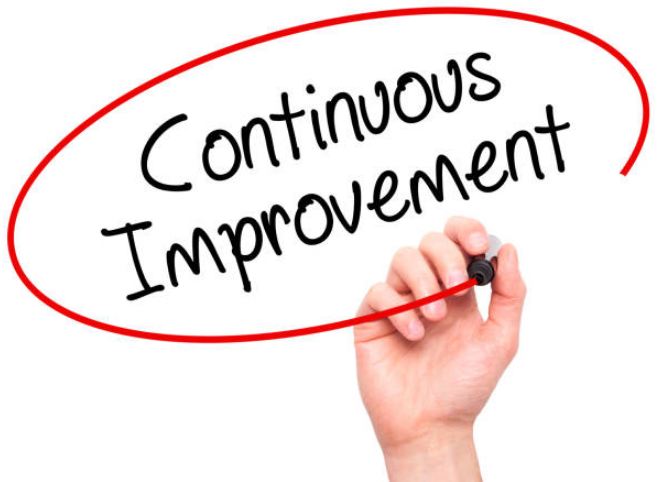Continuous process improvement is a systematic approach to achieve both incremental and breakthrough improvements in processes.
This results in effective, better, and more efficient ways of producing products or services.
Why is continuous process improvement important? The world is changing daily. If you do not keep up with the changes that are happening, you will soon find that you will not be able to keep up with the competition either.
By using continuous process improvement methods and techniques, you can determine if your business activities are the way to serve both your customers and the organization.
However, you must realize that this is not a one-time effort. If you want to achieve total customer satisfaction and increased sales, then continuous process improvement must be an ongoing initiative. It must become a way of life.
Systematic application of continuous process improvement methods will result in it becoming second nature.
The key steps are
– Select
– Analyze
– Measure
– Improve
– Evaluate
1. Select
It is important to select a process that needs improvement. Choosing one that is already working well is a waste of time and money.
The process you choose should also be one that is important to meet customers’ wants and needs and also be one that is critical to achieving your organization’s goals.
2. Analyze
You now need to understand how the process currently works and analyze it. This will require you to document the process as it is currently practiced. This is also known as the “as is” process.
Identify all the process tasks and create a process flowchart. This will provide a visual drawing to help you to identify tasks that may not be adding value.
You will then need to decide what are the processes you want to measure.
3. Measure
Measurement is key to process improvement. If you cannot measure, you cannot manage effectively.
An initial baseline performance level must be established first. Then continue to measure the process. Only then can you determine if any improvement has happened.
Gathering baseline data is important as what you think it is and what it actually is can be quite different.
The process performance gaps need to be identified next. Non-value added tasks are an example. You will be able to identify other problem areas by reviewing your process flowchart.
Common problem areas are poor communication, lack of training, use of outdated processes, unclear responsibilities, and lack of clear procedures; insufficient delegation of authority to operations personnel, and lack of management availability to make key decisions.
4. Improve
Process goals must be set to increase the probability of success. Achieving goals also provides encouragement for the team and acts as a measure for management to recognize employee achievement.
By its very definition to achieve continuous process improvement, goals must be set and work must be done to meet them. Then set higher goals and continually improve on the way work is done to achieve them.
You need to find improvement needs based on the performance gaps that you would have uncovered earlier.
Confirm desired process performance levels based on your customer needs. You must also decide on any supplier prerequisites to be able to meet these targets.
Now look back at your earlier analysis to identify the root causes of the process problems. Identify opportunities to streamline and modify the process.
You can redesign the process to be more efficient by eliminating or simplifying steps. Or you can also modify steps within the process.
There will be a number of ideas that you might get. Decide on the best one depending on the impact it will have, the number of funds that you have, the skills required and the resources it will require.
Get back to your original flowchart and note the changes you have made. This will give a clearer picture of how your changes will impact your process.
It is better to test your solutions and see if they work well. If you get good results, you can then go ahead and implement the changes.
It is important that data is gathered on all key process measures. This is the best way to determine if your process changes are resulting in improvements. If necessary, you may need to add new process measures.
5. Evaluate
It may seem that you have achieved process improvement, but your job is not done until you get all the data and feedback for use in evaluating the outcome.
This step is necessary to ensure that the root causes of your process problems are reduced or eliminated. You also need to confirm that your customer needs are satisfied.
Once you are satisfied that your initial efforts have been successful, it is now time to standardize it and monitor the ongoing improvement.
This step is crucial to ensure that people do not return to their old way of doing things.
It is now time to communicate the improved process flow and documented procedures. Training on the improved processes needs to be conducted if required.
Importantly, data must continually be collected to measure and monitor to ensure that the improved process is maintained and if possible improved.
Once a changed process has been put in place, there is the question of when to disband the team.
It is best to maintain the team until a point when the improved process has been well established and has become second nature to the people handling them.

